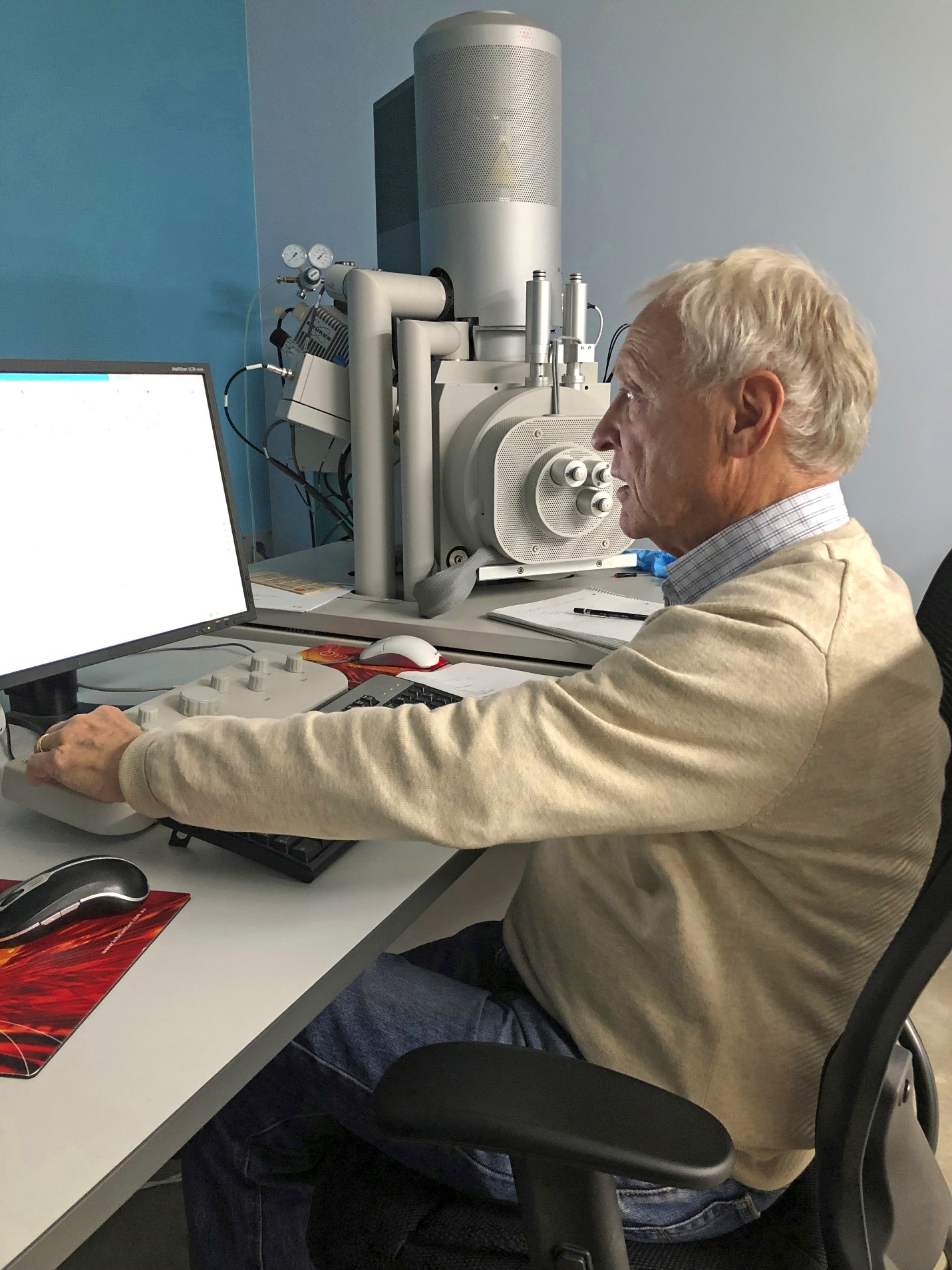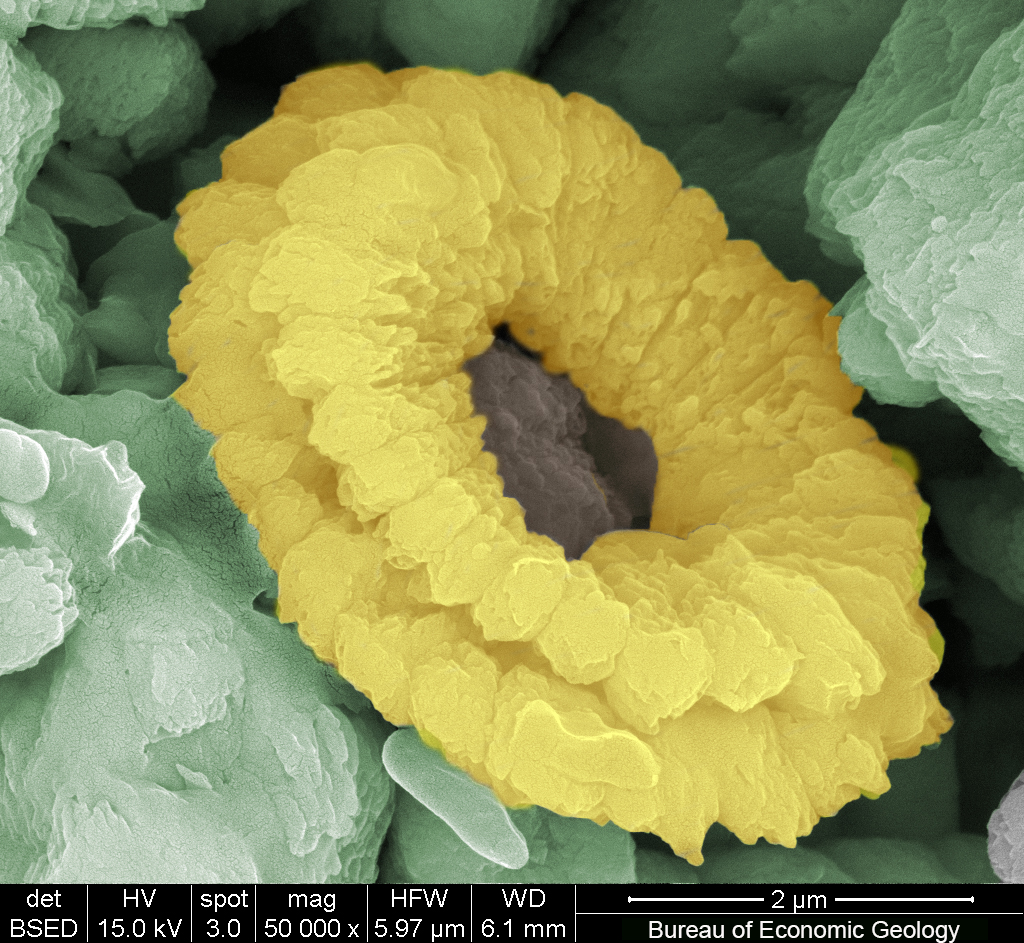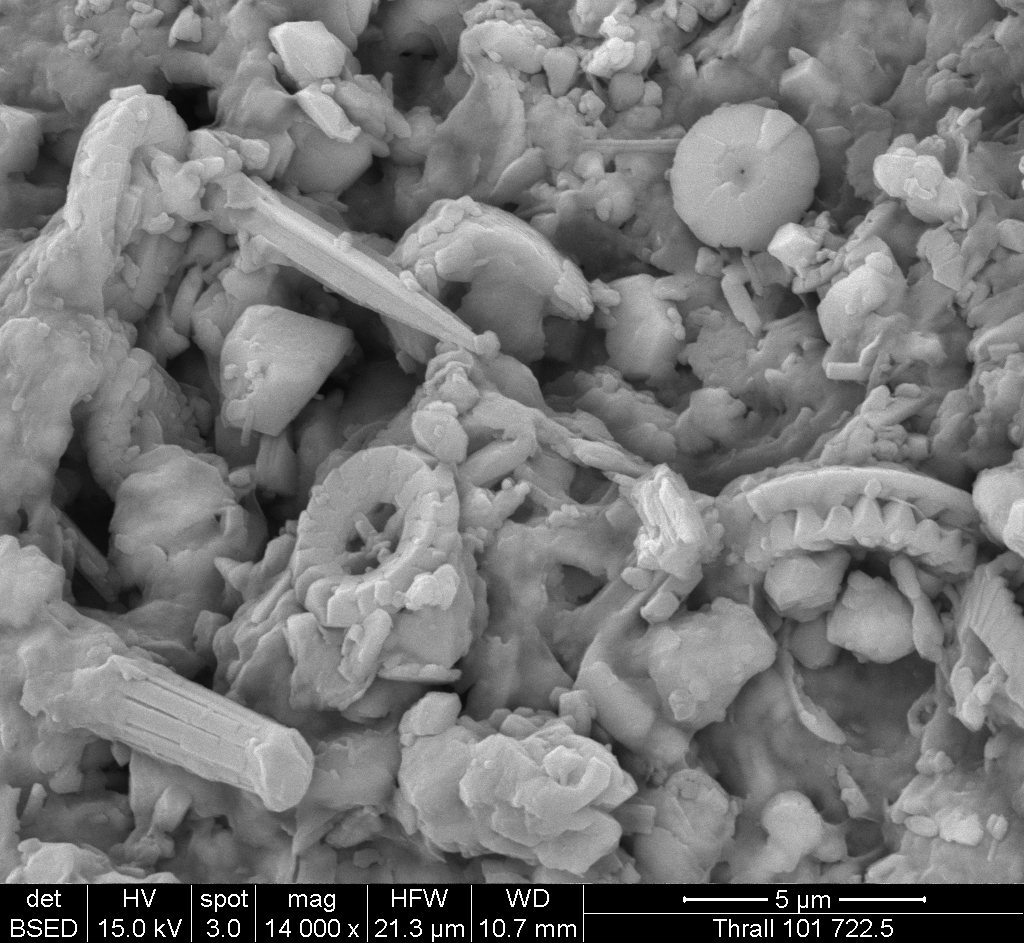Tiny Plankton Fossils Provide Clues about Ancient Depositional Environment

Bob Loucks using the Bureau SEM.
Coccoliths (plankton nanofossils made up of calcite, an important component in natural chalk) are very common in deepwater sediments from the mid-Jurassic Period to the present. Researchers Robert Loucks, Priyanka Periwal, and Robert Reed of the Bureau of Economic Geology’s State of Texas Advanced Resource Recovery (STARR) program have recently studied these fossils with the Bureau’s scanning electron microscope (SEM).
Coarse-grain limestones of South and Central Texas associated with Cretaceous-era volcanoes have previously been interpreted as originating in shallow water. However, SEM examination of these rocks has found that they are rife with deepwater coccoliths. Many rock samples associated with the volcanoes, including some from McKinney Falls State Park in the southern part of Austin, have been shown to contain coccoliths and broken pieces derived from coccoliths.
This mix of shallow-water and deepwater fossils in these limestones indicates formation by submarine landslides that mixed sediments on the flanks of the volcanoes. Sometimes the smallest details can have important scientific implications!
For more information about the Bureau of Economic Geology’s SEM research, please contact Priyanka Periwal.

A colorized SEM image of Late Cretaceous South Texas limestone showing a yellow-tinted calcareous nanofossil (coccolith), a common component of chalk (credit: Priyanka Periwal).

Grayscale SEM image of Late Cretaceous South Texas limestone showing several different kinds of calcareous nanofossils (coccoliths) and some of the spines associated with them (credit: Rob Reed).